William Faulkner is a prolific writer best known for his experimental writing style. Discover the best William Faulkner novels to read in our guide.
William Faulkner is an American writer born in 1897 and died in 1962. Throughout his life, he wrote 19 novels, over 100 short stories, and some screenplays. He was a prolific writer known for his lengthy sentences and sometimes challenging narrative voice. He was born and raised in Mississippi, and the Southern people’s culture greatly influenced him, which shows up in his writings.
The best William Faulkner novels explore Faulkner’s love for the South showed up in his creation of an entire county and town, Jefferson, Mississippi, in Yoknapatawpha County. Many readers feel surprised when they learn neither of these places is real.
Faulkner’s contributions to literature earned him many accolades, including the 1949 Nobel Prize in Literature. In addition, two of his books, A Fable in 1954 and The Reivers in 1962 earned the Pulitzer Prize for Fiction.
What set Faulkner apart from writers of his time was his contemporary themes and experimental writing style. He was one of the pioneers of the stream-of-consciousness writing style. He regularly experimented with changing the story’s tone or narration to keep the reader engaged and interested. If you’re interested in this topic, you’ll also enjoy our round-up of the best historical fiction authors.
Contents
Famous William Faulkner Novels
1. Soldiers’ Pay
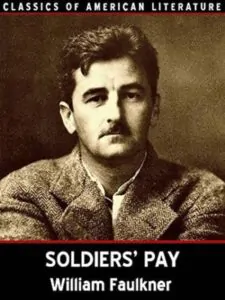
Soldiers’ Pay was one of the first to come from World War I, and it tells of a wounded veteran and the challenges he faced on his homecoming. The book follows a group of soldiers returning from the war and traveling across the country on a train. One, blind and nearly mute, gains the compassion of his fellow soldiers, who help him home. He returns home to find that his family has moved on, clearly showcasing war challenges to readers.
“Stars were golden unicorns neighing unheard through blue meadows.”
William Faulkner
2. The Sound and the Fury
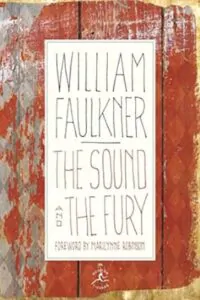
The Sound and the Fury is considered one of the best English-language novels of the 20th century. The story takes place in Jefferson, Mississippi, in the early 20th century. It follows the Compson family through three decades of life, the loss of financial security, a faith crisis, and several deaths.
This work stands out in English literature because it uses many different narrative styles in its four sections, including stream-of-consciousness writing and a third-person omniscient point of view. It also introduces the fictional worlds of Jefferson, Mississippi, and Yoknapatawpha County, which play heavily into Faulkner’s writing. In 1959, the book became a motion picture.
You might be interested in exploring fiction books, such as the best Ishiguro books.
“Clocks slay time… time is dead as long as it is being clicked off by little wheels; only when the clock stops does time come to life.”
William Faulkner
3. As I Lay Dying
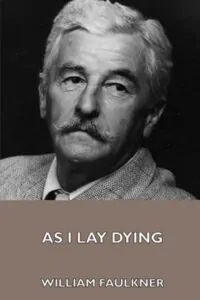
This Southern Gothic novel As I Lay Dying was Faulkner’s fifth and regularly ranks among the top options in English literature. The book has 15 different narrators and follows what happens as Addie Bundren lies dying and what follows as the Bundren family decides what to do with her body after her death.
Though this sounds like a disturbing premise for a book, it has a very intimate style and tone. It is another example of stream-of-consciousness writing, and Faulkner claimed that he wrote the novel over just six weeks and never changed a word of it.
“It takes two people to make you, and one people to die. That’s how the world is going to end.”
William Faulkner
4. A Rose for Emily
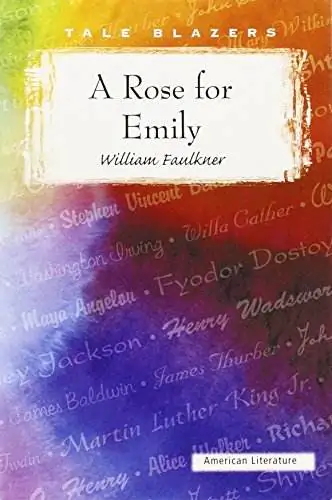
A Rose for Emily initially came out as a short story in The Forum. It is another book set in Yoknapatawpha County and tells of the death of Miss Emily, an older woman in the community. As the entire town heads to the funeral for Miss Emily, the truth behind her death comes to light. This book is a bit gruesome, but it showcases the true literary genius of the author.
“She carried her head high enough – even when we believed that she was fallen. It was as if she demanded more than ever the recognition of her dignity as the last Grierson; as if it had wanted that touch of earthiness to reaffirm her imperviousness”
William Faulkner
5. Sanctuary

This psychological melodrama explores the intricacies of the classic South. It explores a group of criminals bent on creating mayhem, starting with the abduction and brutal treatment of Temple Drake, a well-bred girl from Mississippi. Though Faulkner claimed he wrote Sanctuary to make some money, modern critics believe he was trying to make a social commentary about the death of the old South with this work. Nevertheless, this book was Faulkner’s critical breakthrough and the one that made him a household name in literature.
“It’s not four days ago I find a bastard squatting here, asking me if I read books. Like he would jump me with a book or something. Take me for a ride with the telephone directory.”
William Faulkner
6. Light in August

This novel The Light in August introduces Joe Christmas, a drifter of mixed ancestry who struggles to believe he is of black and white blood. In addition, he struggles with his identity as a partially black man due to the racial tensions of the Deep South.
In this book, Faulkner skillfully creates a character who does something extremely evil yet still evokes the reader’s sympathy. The book also highlights the racial problems of the Deep South in the 1920s, but modern readers may feel slightly overwhelmed by its strong racial themes.
“Memory believes before knowing remembers. Believes longer than recollects, longer than knowing even wonders.”
William Faulkner
7. Absalom, Absalom!
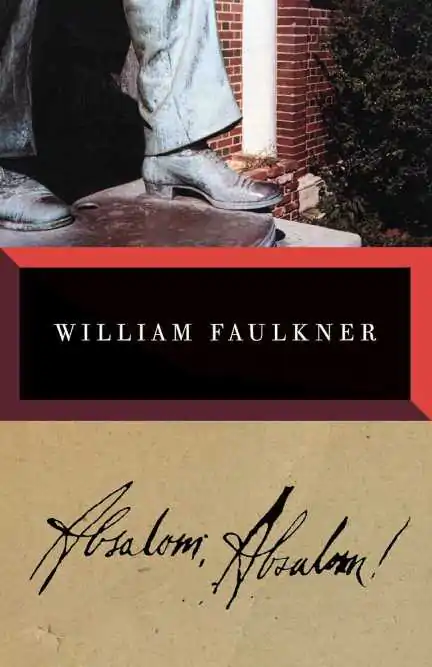
Goodreads reviewers often consider Absalom, Absalom! the writer’s masterpiece. It tells of Thomas Sutpen, a poor man who marries a respectable family. Yet his passion and desire for control lead to the ruin of his family. One reason this book stands out is Faulkner’s use of multiple narrators. It questions whether people can know the truth about the past entirely or whether there will always be a question about what truly happened.
“I was wrong. I admit it. I believed that there were things which still mattered just because they had mattered once. But I was wrong. Nothing matters but breath, breathing, to know and to be alive.”
William Faulkner
8. The Hamlet

The Snopes Trilogy has three books that are a commentary on the antebellum South in the Reconstruction era. This first book tells how Flem Snopes came to lead the town of Frenchman’s Bend through a mixture of cunningness and deceit. Faulkner came out with The Hamlet in 1940.
It put together several short stories he had previously published, including “Fool About a Horse” and “The Hound”. Throughout the story, the people around Flem remain passive to his rise to power, which sets the stage for him to take over.
“He fled, not from his past, but to escape his future. It took him twelve years to learn you cannot escape either of them.”
William Faulkner
9. If I Forget Thee, Jerusalem
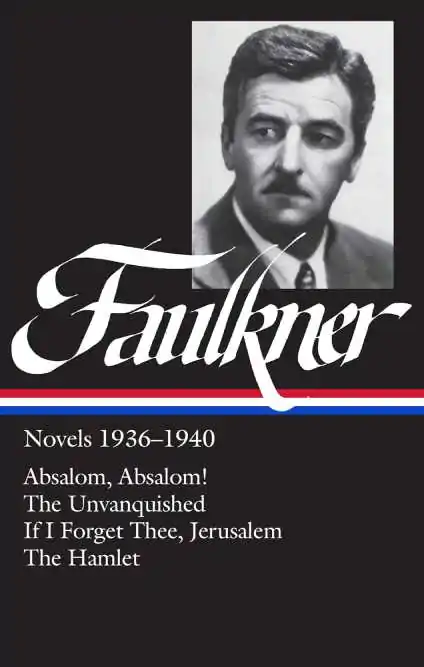
If I Forget Thee, Jerusalem, later titled The Wild Palms, is two stories woven into one. The first tells of Harry Wilbourne, a young man who falls in love with Charlotte Rittenmeyer. The only problem? They have no money, and Charlotte is married. The second story tells of a convict sent to rescue a woman caught in a tree during a flood. He rescues her, but they end up washed downstream and must struggle back up together.
“Given the choice between the experience of pain and nothing, I would choose pain.”
William Faulkner
10. Go Down, Moses
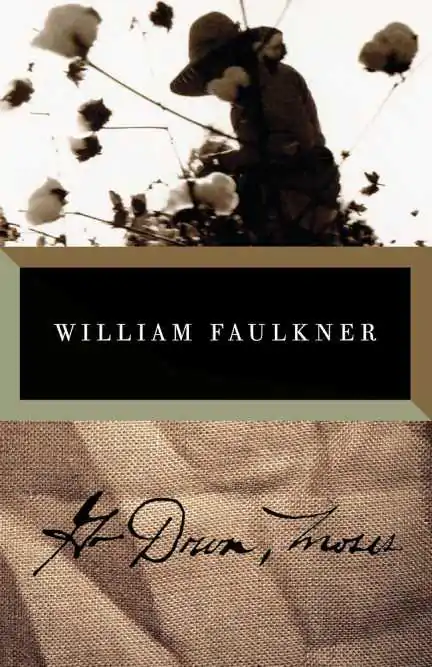
This novel Go Down Moses takes seven interrelated stories and combines them into one book. Like most of Faulkner’s works, it takes place in Yoknapatawpha County. The stories in this collection examine the changing relationships between different racial groups at this time in the South. It also explores the theme of man against nature.
“Truth is one. It doesn’t change. It covers all things which touch the heart – honor and pride and pity and justice and courage and love.”
William Faulkner
11. The Town
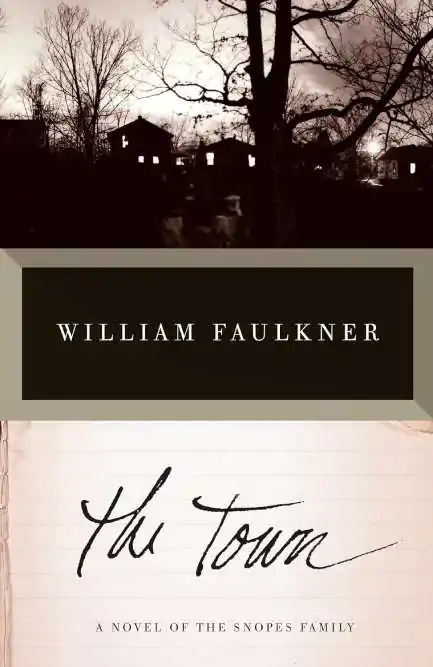
This story The Town has three narrators, and it tells how Flem Snopes moves his family to Jefferson and attempts to take over that town as he did in the first one. Even though this is a sequel to The Hamlet, it stands on its own. Many critics and reviewers prefer this second book to its predecessor because of the consistency of the three distinct narrators.
“She was bored. She loved, had the capacity to love, for love, to give and accept love. Only she tried twice and failed twice to find somebody not just strong enough to deserve it, earn it, match it, but even brave enough to accept it.”
William Faulkner
12. The Mansion

While The Hamlet and The Town tell of the rise of the Snopes family, The Mansion tells of their downfall. MInk Snopes is the main narrator of this story, and he is the resident psychopath of the town. This lends an interesting perspective to the work. This book is layered and brings multiple perspectives into one continuous story. The story’s beginning and end have clear parallels that add to the enjoyment of this read.
“Like any good optimist, I don’t expect the worst to happen. Only, like any optimist worth his salt, I like to go and look as soon as possible afterward jest in case it did.”
William Faulkner
13. Flags in the Dust
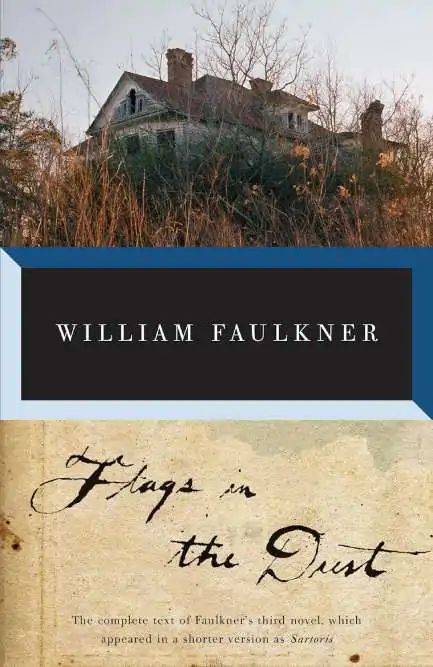
Flags in the Dust is an interesting book by Faulkner because it was initially published in a highly edited form under the title Sartoris, which came onto the scene in 1929. In 1973, the entire manuscript was found by Faulkner’s daughter and then republished as Flags in the Dust. This novel is long, which may be why the original publisher cut it so deeply.
It also mentions the Snopes in passing but is not part of the Snopes Trilogy. Nevertheless, fans of Faulkner often flock to it to say they have read the previously unpublished work of their favorite writer.
“Nowadays he drove the car into town to fetch his grandfather from habit alone, and though he still considered forty five miles an hour merely cruising speed, he no longer took cold and fiendish pleasure in turning curves on two wheels or in detaching mules from wagons by striking the whiffle-trees with his bumper in passing.”
William Faulkner
14. Intruder in the Dust
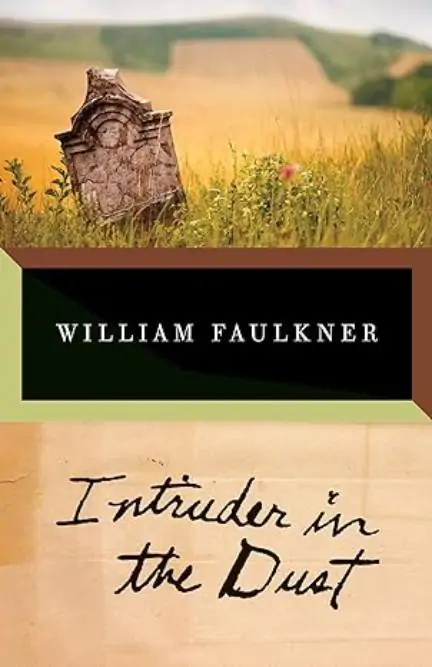
Intruder in the Dust is a novel set in the American South. It delves into the region’s racial tensions and moral complexities during the late 1940s. The narrative follows a young boy, Charles Mallison, who is determined to prove the innocence of a Black man who is wrongly accused of murder.
The novel has complex themes of racism, justice and community, looking at the political and social tensions of the time. Faulkner’s rich writing style allows the reader to find deep and hidden meanings behind the story that resonate with the readers of today.
“You don’t dare think whole even to yourself the entirety of a dear hope or wish let alone a desperate one else you yourself have doomed it.”
William Faulkner
15. The Reivers

The Reivers is set in the early 20th century, telling the story of an eleven-year-old boy named Lucius who embarks on an adventurous road trip with his two friends. The characters encounter challenging and funny situations throughout the journey as they meet new friends and even acquire a racehorse. The novel tackles themes of friendship, right and wrong and consequences all while keeping a lighthearted tone throughout.
“It was too late. Maybe yesterday, while I was still a child, but not now. I knew too much, had seen too much, I was a child no longer now; innocence and childhood were forever lost, forever gone from me.”
William Faulkner
Looking for more recommendations? Check out our round-up of the best Canadian authors of all time!